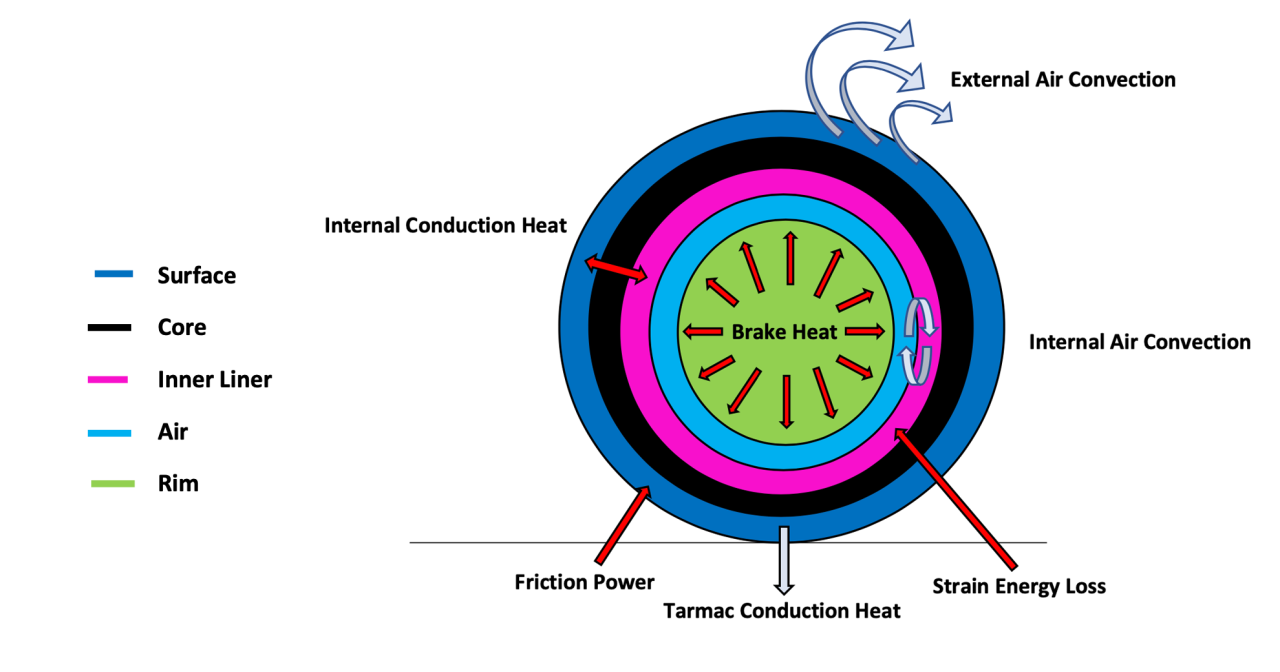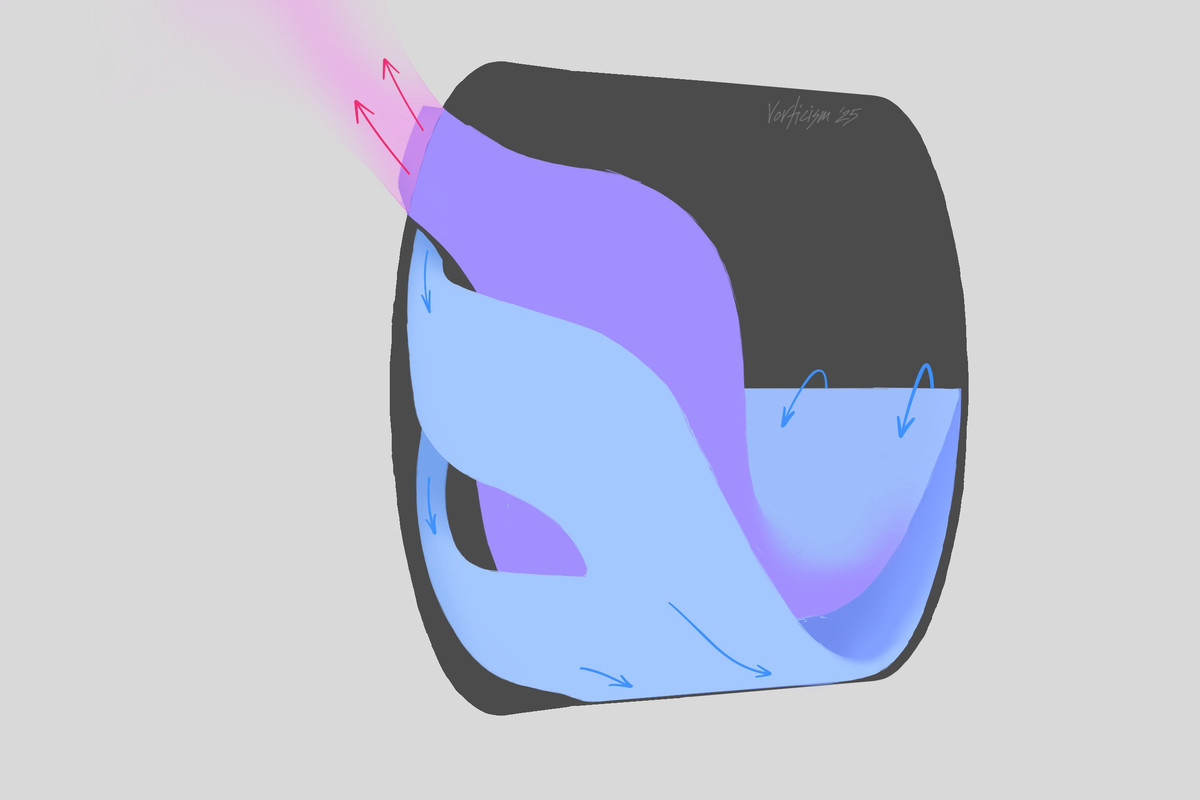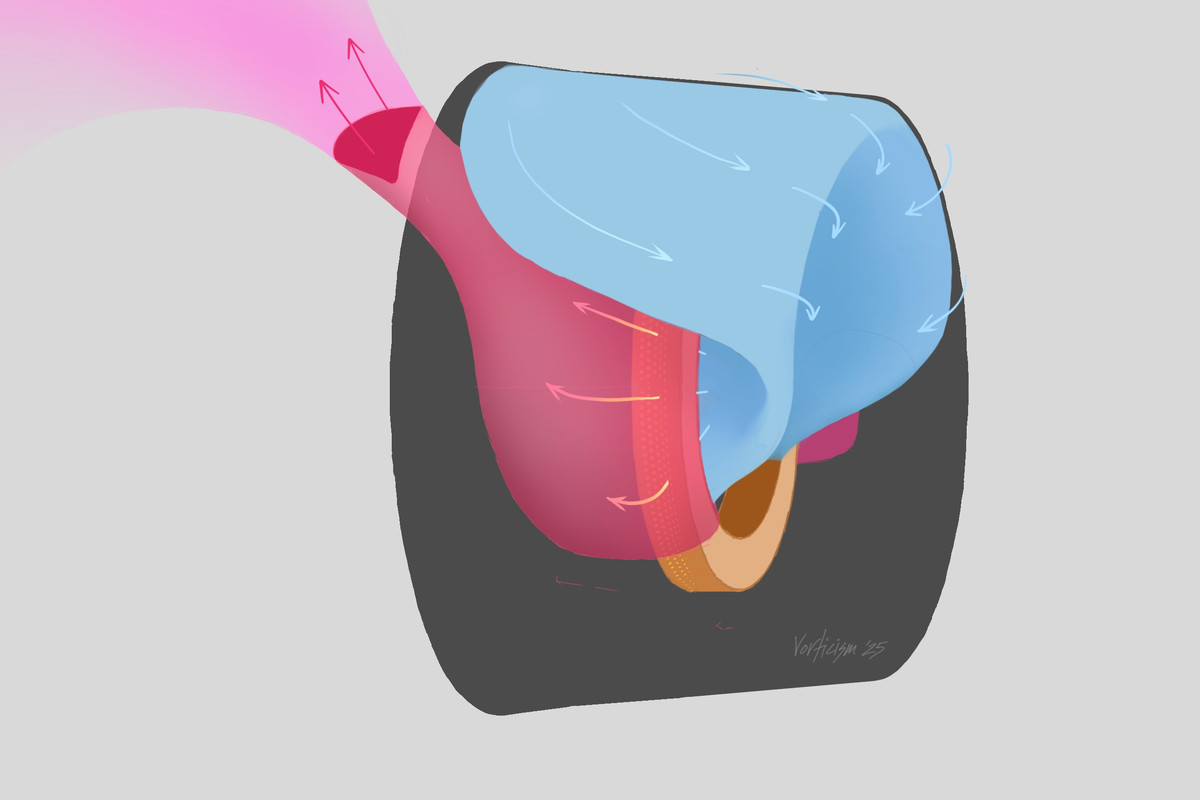- Login or Register
No account yet? Sign up
That’s what I wrote as well a few pages back, but those copper pipes contain a PCM that wouldn’t be usable here perhaps.SB15 wrote: Here's my analysis/theory: You know how Laptops uses specially designed copper pipes, with thermal pads under the heatsink with big openings for the fan's airflow, to allow for heat extraction in the rear and sides?
If you look at the Mclaren brakes, it's not that far off from my analogy.
Without forced air or a heat exchanger to increase surface there’s no way you can heat a tire with so little contact time just by airflow escaping to the back of the car.AR3-GP wrote:I wonder if more attention can be paid to how the heat radiates outward from the back of the car. There are many external heat sources including the engine, the cooling system, the exhaust pipes, the front brake duct exits and the rear brake ducts exits. How do they conduct and convect heat towards the back of the rear tires? If you take a thermal snapshot, what is the temperature of the air entering the rear brake ducts, the air hitting the face of the tire, and the temperature of the air near the inner sidewall?
dialtone wrote: ↑02 Jun 2025, 19:26Without forced air or a heat exchanger to increase surface there’s no way you can heat a tire with so little contact time just by airflow escaping to the back of the car.AR3-GP wrote:I wonder if more attention can be paid to how the heat radiates outward from the back of the car. There are many external heat sources including the engine, the cooling system, the exhaust pipes, the front brake duct exits and the rear brake ducts exits. How do they conduct and convect heat towards the back of the rear tires? If you take a thermal snapshot, what is the temperature of the air entering the rear brake ducts, the air hitting the face of the tire, and the temperature of the air near the inner sidewall?

Some laptops don’t have liquid infused water in the cooling pipes because some have really good airflow for heat extraction while others uses PCM given the airflow constraints.dialtone wrote: ↑02 Jun 2025, 19:19That’s what I wrote as well a few pages back, but those copper pipes contain a PCM that wouldn’t be usable here perhaps.SB15 wrote: Here's my analysis/theory: You know how Laptops uses specially designed copper pipes, with thermal pads under the heatsink with big openings for the fan's airflow, to allow for heat extraction in the rear and sides?
If you look at the Mclaren brakes, it's not that far off from my analogy.
Aside from that the name of the game is either improve airflow or transfer heat where there’s more airflow, not much else can really be done.
My mistake for the confusion, I was just adding on what I said early wasn't saying you were wrong either.
Same angle showing the rear disc intake and collector arrangement:vorticism wrote: ↑01 Jun 2025, 20:51The brake ducts are like the '17 formula barge boards of the ’22 formula. Merc’s caliper ducting is unique compared to what I’ve seen of Mclaren and Red Bull’s. It's routed around and beneath the upright before making a 180* turn just in front of the caliper. Viewed from the rear showing the exit ducting:



I too thought they were just inspection holes that would get covers when assembled, but looking closely at the second photo in the more assembled state, you can see there's a directionality to the opening, opening to the outboard, with a duct outlet just inboard of it, suggesting they are doing something there similar to what I mentioned about the W16 rear disc collector diluting. On RB21, directing a portion (via the hole/portal) of the front disc outflow here instead of directly to the main outlet, while diluting it with the flow from that other small duct beside it. So this implies they are trying to heat this portion of cake-tin/drum on the front axle. The cake tin would be forming the outer confines of this duct.AR3-GP wrote: ↑02 Jun 2025, 06:49It almost looks like variable size blanking panels can be installed on the RB21 front brake bodywork. Could this be done to control the amount of heating of the tires with brake disc heat?
https://i.postimg.cc/kGQ1hnjP/image.png
https://i.postimg.cc/V6YWLjgp/image.png
I agree with you on this theory. They can mix hot brake exhaust with fresh air to create a warm air layer under the outermost cake tin layer in order to warm the wheel rim/tyre. I was able to find the fully blanked brake exhaust outlet in one of the photos from Spain, so they also have the option to go to a "maximum rim cooling" configuration by blocking the hot brake exhaust from entering that outermost shell.vorticism wrote: ↑03 Jun 2025, 01:05I too thought they were just inspection holes that would get covers when assembled, but looking closely at the second photo in the more assembled state, you can see there's a directionality to the opening, opening to the outboard, with a duct outlet just inboard of it, suggesting they are doing something there similar to what I mentioned about the W16 rear disc collector diluting. On RB21, directing a portion (via the hole/portal) of the front disc outflow here instead of directly to the main outlet, while diluting it with the flow from that other small duct beside it. So this implies they are trying to heat this portion of cake-tin/drum on the front axle. The cake tin would be forming the outer confines of this duct.
Yet on the rear axle all the talk is of, and I'll I've seen in photos, is that they focus on cooling the cake-tin/drum.




I'd imagine it makes things hard to work out exactly what is going on where they are being routed though i wonder if the thermal camera they used helps, iirc somewhere was mentioned the cool spots lined up with vent locations (which makes enough sense obviously) but having that imagine may help decipher what is going on.AR3-GP wrote: ↑03 Jun 2025, 03:57Mclaren front duct seems very complicated.
https://i.postimg.cc/fTXGLH3J/image.png
https://external-preview.redd.it/tobi-g ... d989210ca7
Their treatment seems much more advanced.
I also think your theory could fit what they are doing with the rear collector (RBR). The rear brake disc collector on the Red Bull has a large mushroom shape. What would the excess volume be fore? Perhaps the extra volume is used for mixing... The Mclaren brake disc collector is much smaller, narrower and crucially has less surface area. There's no mixing phenomena there. It's possble Mclaren focused intensely on the heat isolation of the brake disc and that's where Red Bull made a mistake. Their brake disc collector has a lot of surface area. Surface area increases heat transfer to the outer shells of the brake tin. Obviously have not run any numbers, but it seems smart to minimize the surface area of the collector, and attempt to eject majority of the heat out of the duct exits, rather than to have large surfaces where it can radiate to the shell interiors.vorticism wrote: ↑03 Jun 2025, 01:05
I too thought they were just inspection holes that would get covers when assembled, but looking closely at the second photo in the more assembled state, you can see there's a directionality to the opening, opening to the outboard, with a duct outlet just inboard of it, suggesting they are doing something there similar to what I mentioned about the W16 rear disc collector diluting. On RB21, directing a portion (via the hole/portal) of the front disc outflow here instead of directly to the main outlet, while diluting it with the flow from that other small duct beside it. So this implies they are trying to heat this portion of cake-tin/drum on the front axle. The cake tin would be forming the outer confines of this duct.
Yet on the rear axle all the talk is of, and I'll I've seen in photos, is that they focus on cooling the cake-tin/drum.




It might also explain why Red Bull claim the Mclaren brake ducts were noticeably cooler than other teams. They are extracting heat more effectively, but also passing through cooler free stream air that is not directly heated inside the caliper area of brake drum.AR3-GP wrote: ↑02 Jun 2025, 15:59It could be. I also wonder if the more outboard channel(s) (closer to the tire sidewall), are more likely to be a free air channels, creating an "air curtain" to limit the amount of brake duct heat which is flowing against the sidewall of the tire. If the brake duct exhaust were being exposed directly to the sidewall, I think that would contribute to more heating of the tires. If this is true, then one can see how the Mercedes design seems less optimal. They mix the brake disc exhaust and a free stream in the brake disc collector, but that air is heated and expelled right next to the sidewall of the tire. It seems to lack the air curtain.
https://i.postimg.cc/3r98yD5g/image.png
Yeah it's a fairly reasonable explanation for why the outer cake tin would have "blue spots". Clearly something like this is not that easy because 9 other teams didn't have any blue spots, and it's seems logical to pass cool air to the outer shell. Perhaps the other struggle to actually prevent the brake disc heat from "heat soaking" the air in the outer shell.SiLo wrote: ↑03 Jun 2025, 15:57It might also explain why Red Bull claim the Mclaren brake ducts were noticeably cooler than other teams. They are extracting heat more effectively, but also passing through cooler free stream air that is not directly heated inside the caliper area of brake drum.AR3-GP wrote: ↑02 Jun 2025, 15:59It could be. I also wonder if the more outboard channel(s) (closer to the tire sidewall), are more likely to be a free air channels, creating an "air curtain" to limit the amount of brake duct heat which is flowing against the sidewall of the tire. If the brake duct exhaust were being exposed directly to the sidewall, I think that would contribute to more heating of the tires. If this is true, then one can see how the Mercedes design seems less optimal. They mix the brake disc exhaust and a free stream in the brake disc collector, but that air is heated and expelled right next to the sidewall of the tire. It seems to lack the air curtain.
https://i.postimg.cc/3r98yD5g/image.png